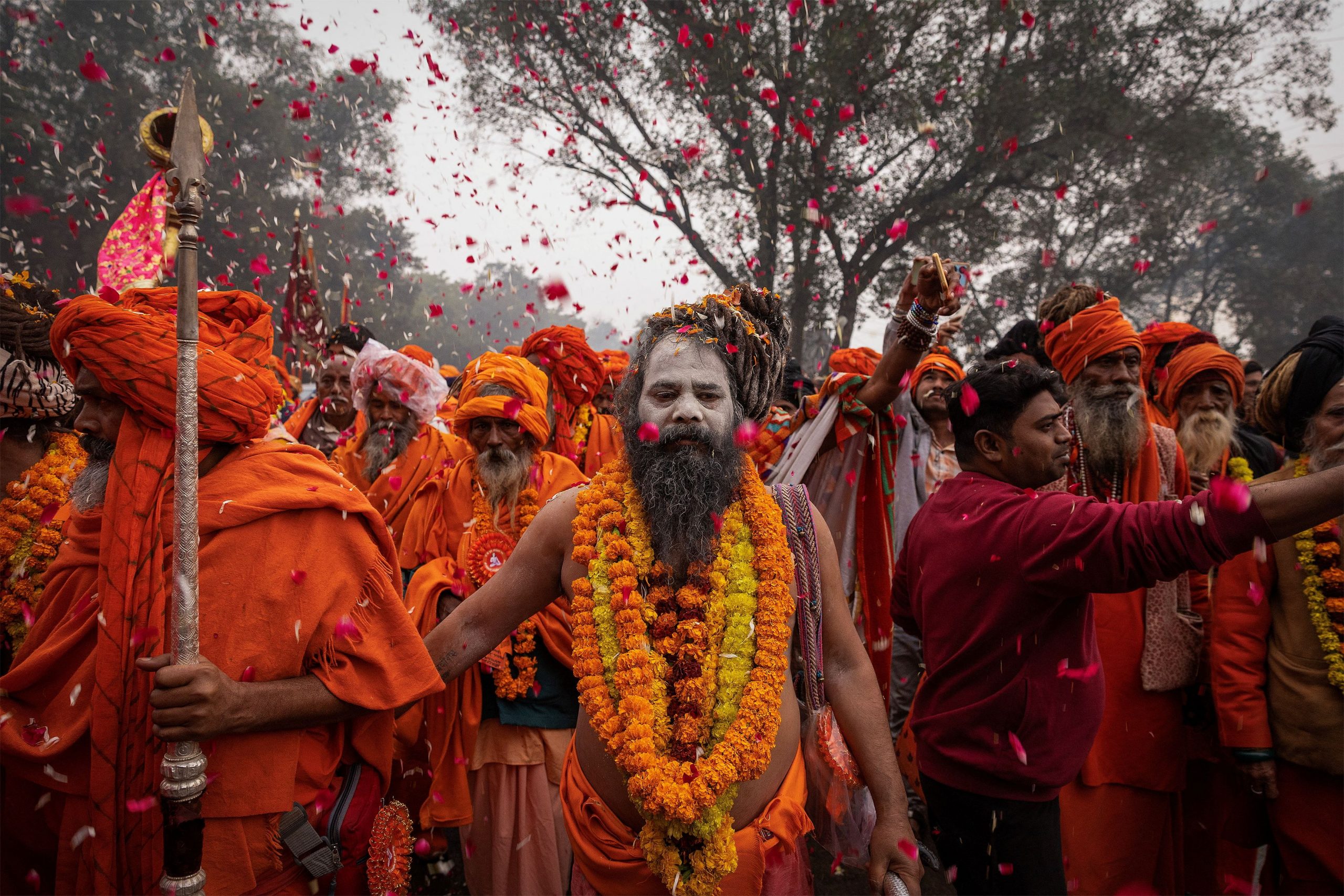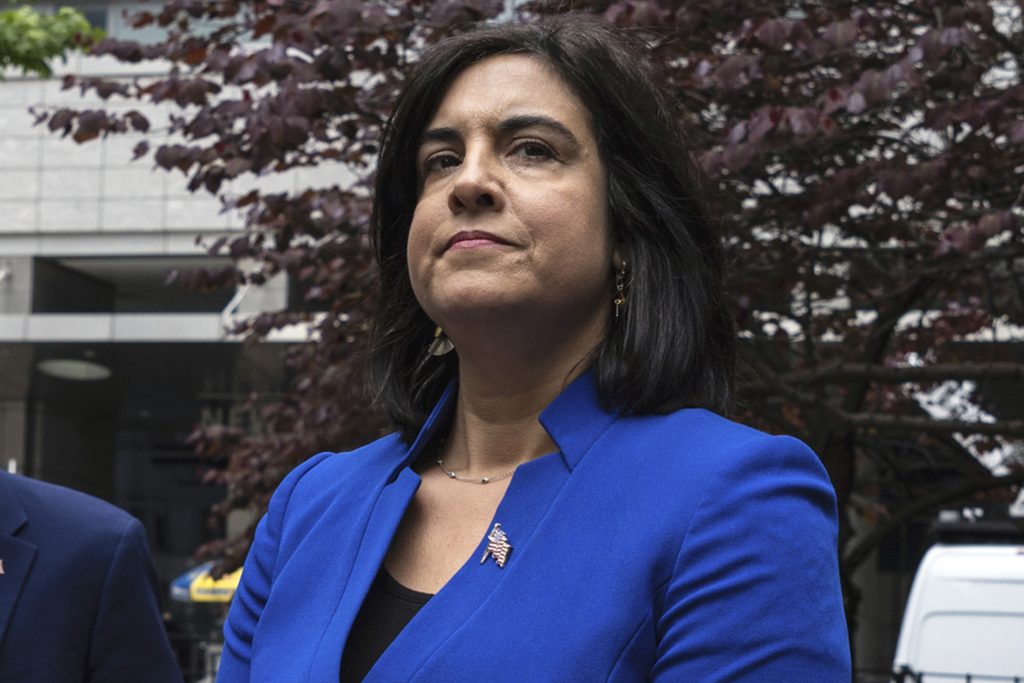Today marks the start of the Maha Kumbh Mela festival, a six-week religious celebration in Prayagraj, in the northern Indian state of Uttar Pradesh.
The Maha Kumbh Mela festival is a sacred Hindu celebration which only occurs every 12 years, to symbolize the legend of twelve days of war between demons and gods over a pitcher containing the elixir of immortality. Hundreds of millions of Hindus and pilgrims convene for the event in the city of Prayagraj, which, according to Reuters, is expected to attract more than 400 million visitors between the start of the festival Monday and the end on February 26, so much so that the event will be discernable from space.
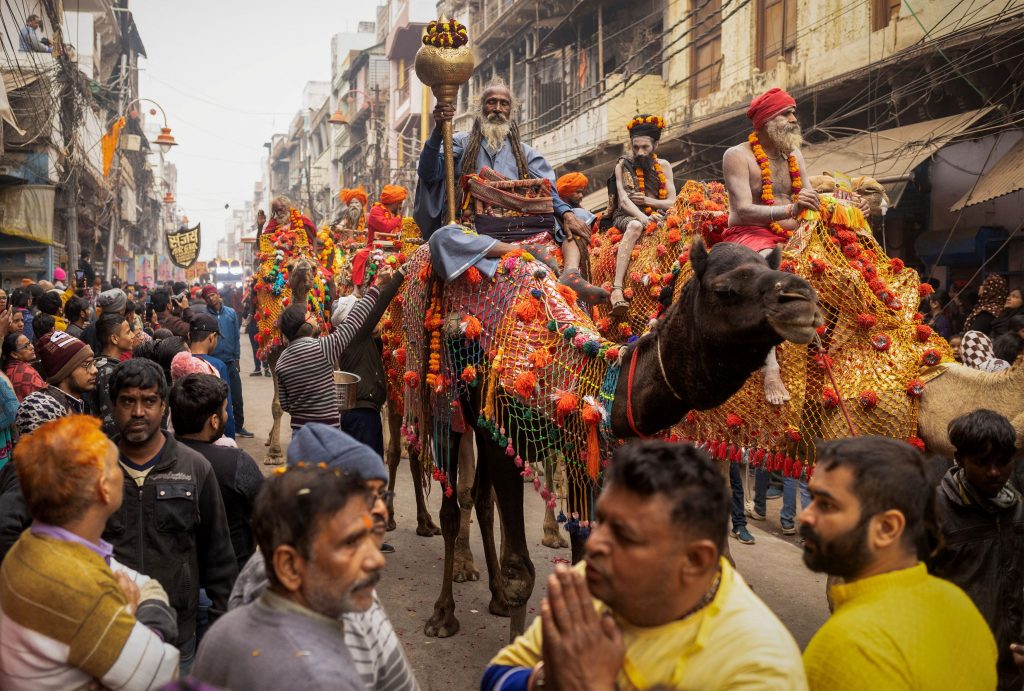
Sadhus or Hindu holy men from Panchayati Bada Udasin Akhara take part in a religious procession during “Peshwai” or the arrival of the members of an akhara or sect of sadhus ahead of the “Maha Kumbh Mela”, or the Pitcher Festival, in Prayagraj, India, January 12, 2025. REUTERS/Adnan Abidi
Monday’s ritual dip alone is expected to draw at least 2 million visitors to three holy rivers: the Ganga, Yamuna, and the spiritual Saraswati. According to tradition, Hindus seeking spiritual absolution come to the rivers to bathe and earn forgiveness for their sins.
“The Maha Kumbh embodies India’s timeless spiritual heritage and celebrates faith and harmony,” Prime Minister Narendra Modi wrote in a post on X.
A very special day for crores of people who cherish Bharatiya values and culture!
Maha Kumbh 2025 commences in Prayagraj, bringing together countless people in a sacred confluence of faith, devotion and culture. The Maha Kumbh embodies India’s timeless spiritual heritage and…
— Narendra Modi (@narendramodi) January 13, 2025
Tens of thousands of police officers are on the scene to monitor foot traffic and provide security, utilizing AI enhanced security cameras to record activity throughout the duration of the festival.
On Tuesday, an exclusive event known as the “royal bath,” takes place at the confluence of the 3 sacred rivers and is reserved for the bathing of ascetics only. The purpose of the festival originates from the Hindu tradition in which the god Vishnu wrestles and defeats demons who harbor a special golden pitcher of immortality.
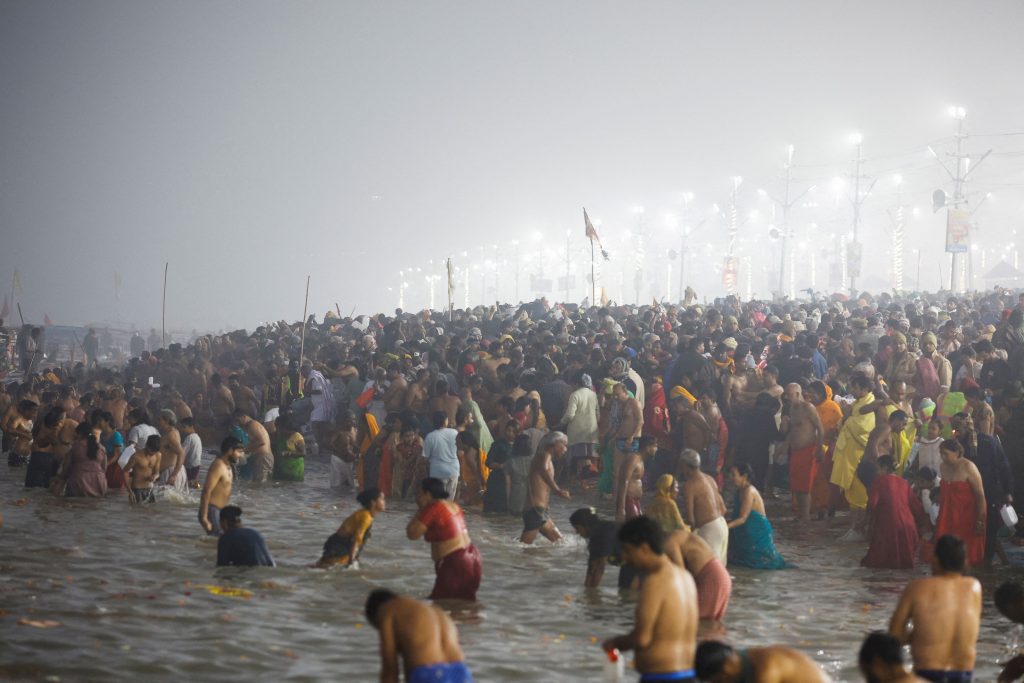
Devotees take a holy dip at Sangam, the confluence of the Ganges and Yamuna rivers with the mythical, invisible Saraswati river, during the ” Great Maha Kumbh Mela”, or the Great Pitcher Festival, in Prayagraj, India, January 13, 2025. REUTERS/Adnan Abidi
In the 12 day fight between Vishnu and the demons, four drops of the nectar of immortality fell to the Earth and established four cities: Prayagraj, Haridwar, Ujjain and Nashik. The drops of nectar explain the origins for why these four sacred cities host the kumbh, although the biggest festivals are always held in Prayagraj.
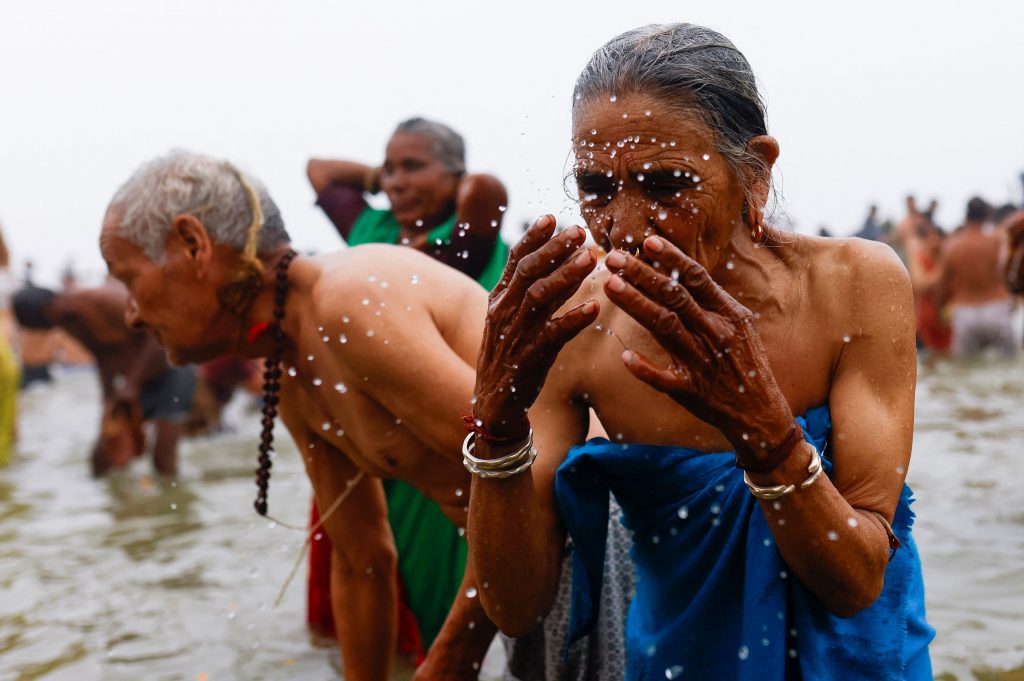
Devotees take a holy dip at Sangam, the confluence of the Ganges, Yamuna and Saraswati rivers, during the “Maha Kumbh Mela”, or the Great Pitcher Festival, in Prayagraj, India, January 13, 2025. REUTERS/Anushree Fadnavis
Hindus who have been attending the festival for years are citing this year’s Kumbh as “maha” or great.
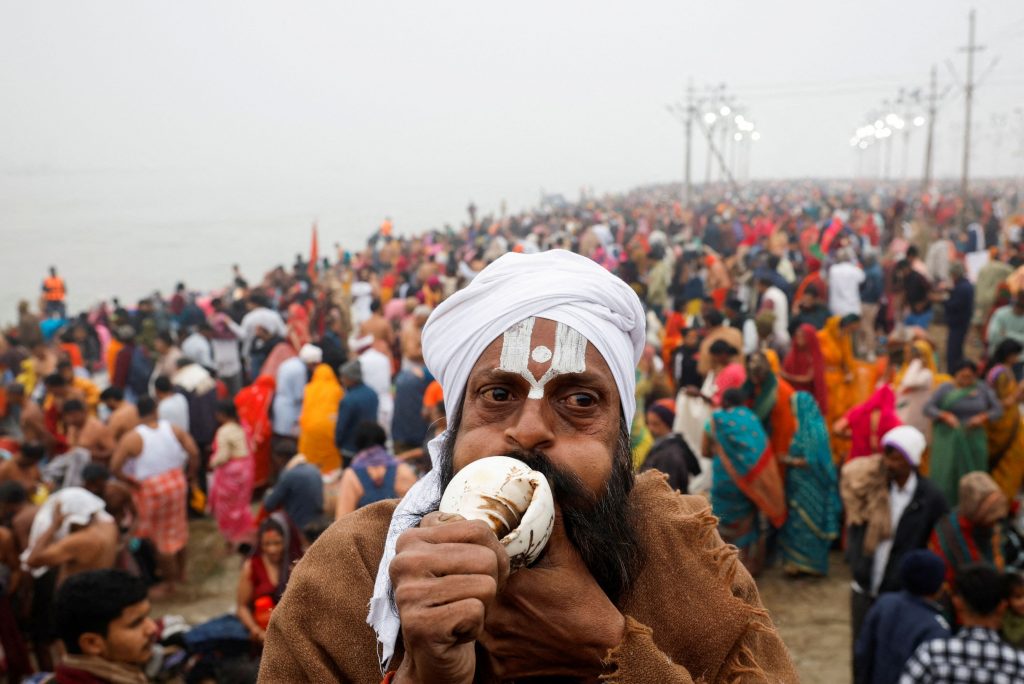
A Sadhu or a Hindu holy prays on the day devotees take a holy dip at Sangam, the confluence of the Ganges and Yamuna rivers with the mythical, invisible Saraswati river, during the “Maha Kumbh Mela”, or the Great Pitcher Festival, in Prayagraj, India, January 13, 2025. REUTERS/Adnan Abidi
“That’s because the current alignment of planets and stars is identical to what existed at the moment of the spill,” Hindu seer Mahant Ravindra Puri told the BBC.
Authorities of Prayagraj have set up a temporary tent city spreading over 4,000 hectares on the banks on the river with resources to accommodate tourists, including 150,000 tents, 3,000 kitchens, 145,000 restrooms, and 99 parking lots.
Maha Kumbh will conclude on February 26, on the day of the Maha Shivratri, a festival honoring the deity Shiva.
